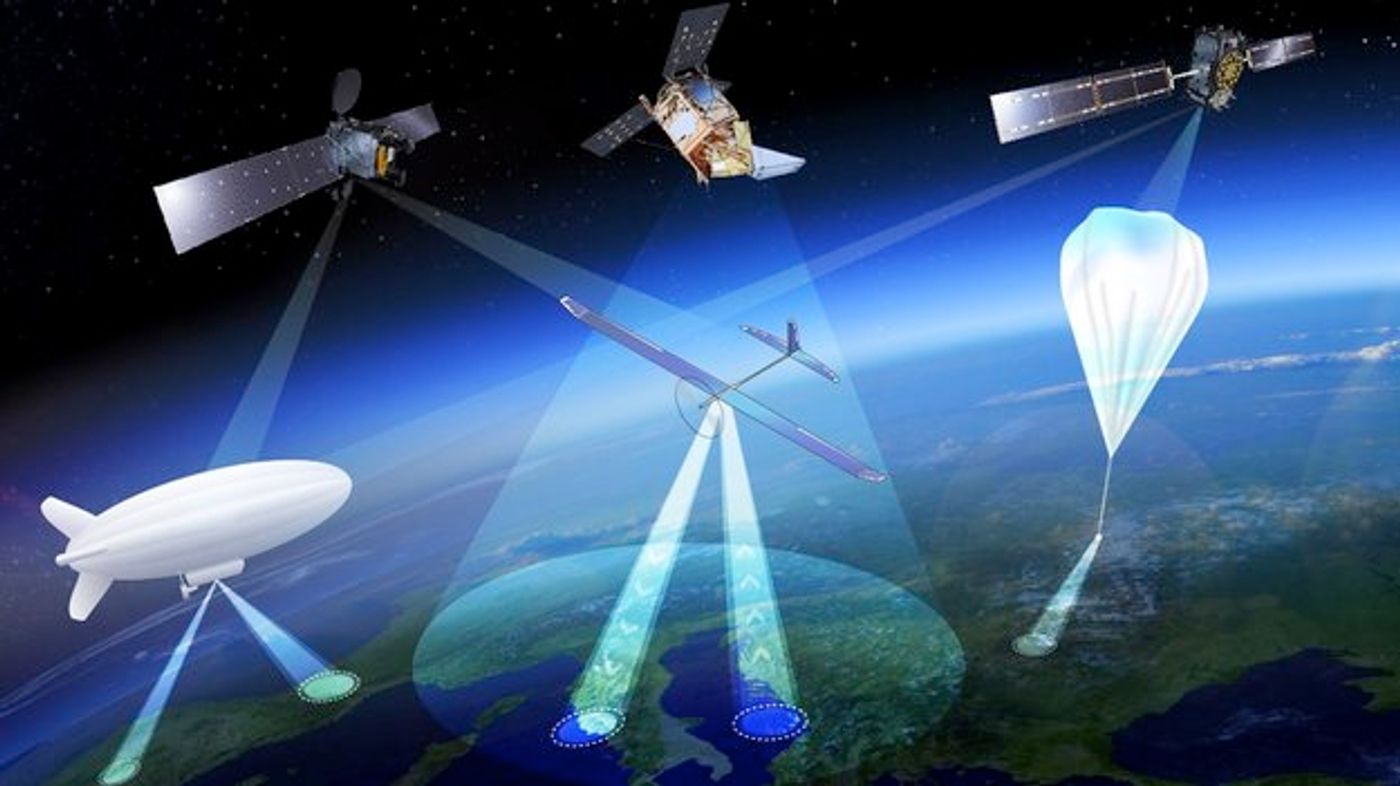The ESA Wants to Expand Upon its High-Altitude Aerial Platforms
If monitoring the Earth from above is on your to-do list, then two of the best ways to go about it are with drones or satellites; unfortunately, each has its shortcomings. Drones can only fly so high, and satellites can only come so close to Earth before they risk tumbling back to the surface.
The European Space Agency (ESA) is actively exploring ways to blur the lines between drones and satellites by looking for the ultimate middleman, and High-Altitude Pseudo Satellites (HAPS) look quite promising.
Image Credit: ESA
HAPS can fly at higher altitudes than drones and airplanes (somewhere around 12 miles above the Earth’s surface), but the big score here is that agencies can deploy them for a fraction of the cost associated with launching satellites into orbit around the Earth with rockets.
HAPS have other advantages too, like lingering over a specific patch of land for extended periods of time to conduct geographic monitoring, wide-area land surveys, and deploy advanced wireless communications systems with existing satellites.
Related: Why did China keep this massive solar-powered drone a secret until now?
Citing the ESA, the ideal place to deploy HAPS is just above the clouds and jet streams. The lack of wind and activity in this environment means that HAPS would be astonishingly energy-efficient, operating on solar power by day and battery reserves by night.
Zephyr, a High-Altitude Pseudo Satellite designed by Airbus, set precedents back in 2010. That said, the HAPS concept isn’t entirely new, but technological advancements are making these modern marvels more of a reality today than ever before.
“We’ve been looking into the concept for the last 20 years, but now finally it’s becoming a reality,” explained European Space Agency Earth observation specialist Thorsten Fehr.
“That’s come about through the maturing of key technologies: miniaturized avionics, high-performance solar cells, lightweight batteries and harness, miniaturization of Earth observation sensors and high-bandwidth communication links that can deliver competitively priced services.”
Related: DARPA creates an ultra-fast and lightweight autonomous drone
Zephyr was merely a proof of concept with limited applications back in the day, but Airbus and other firms continue to push the boundaries of development on future HAPS concepts that could revolutionize the industry. A few areas of interest include taking heavier payloads into the sky, performing additional actions, and operating for more extended periods.
It seems like High-Altitude Pseudo Satellites might have a place in the future of Earthly observation. It should be fascinating to see how far this technology takes us and how it might benefit science as a whole.
Source: ESA









